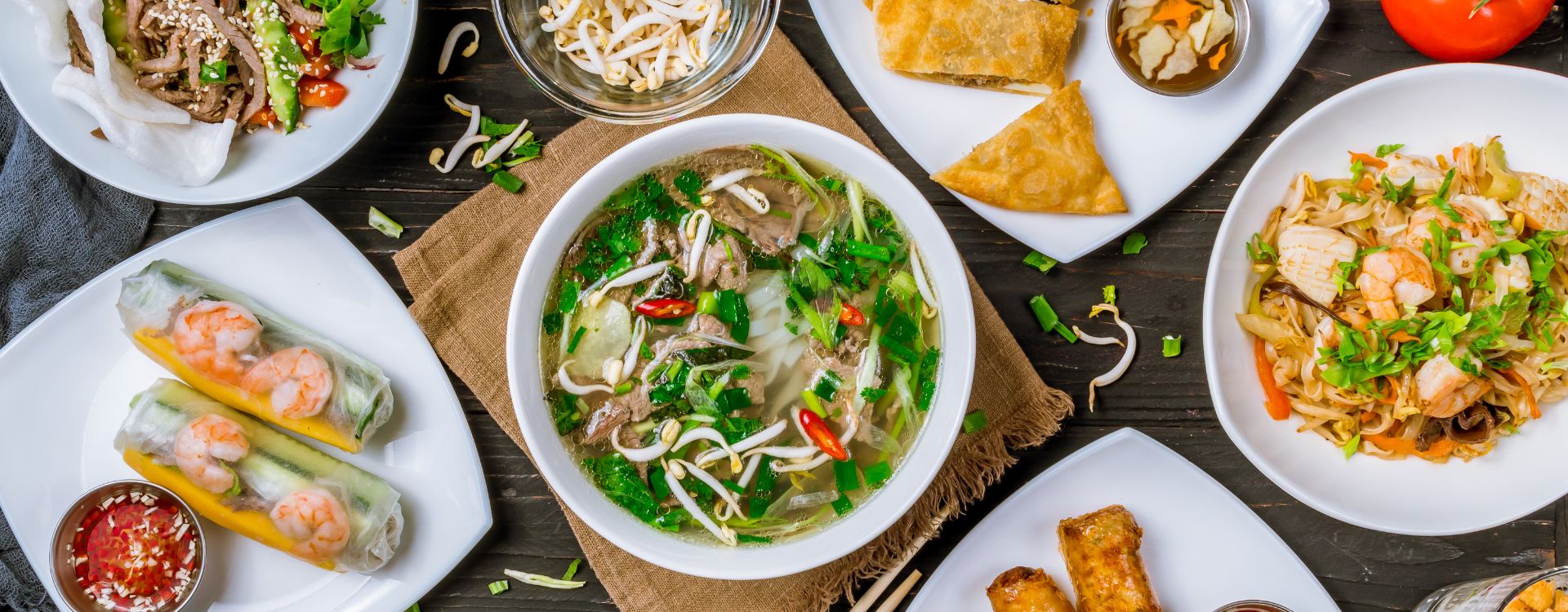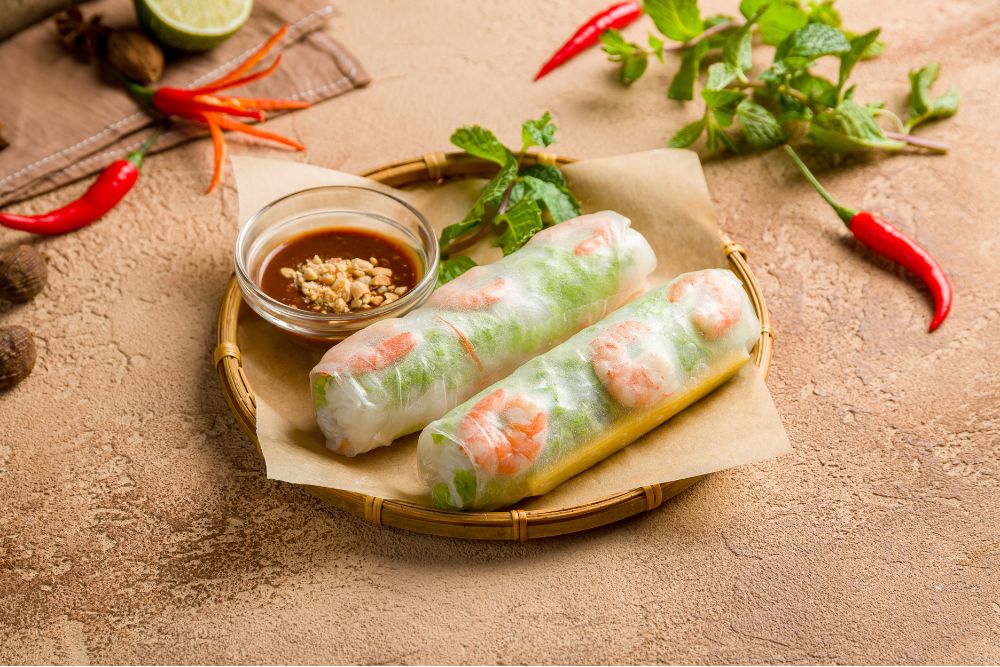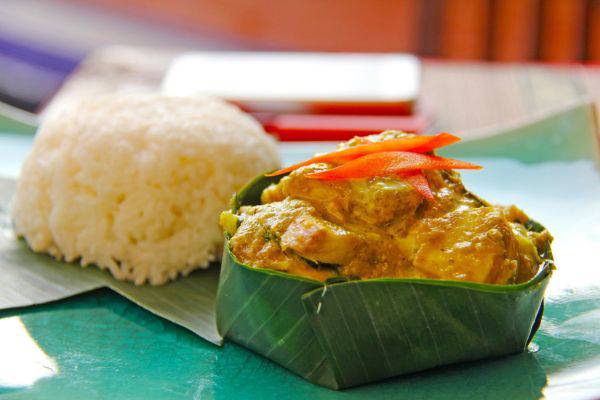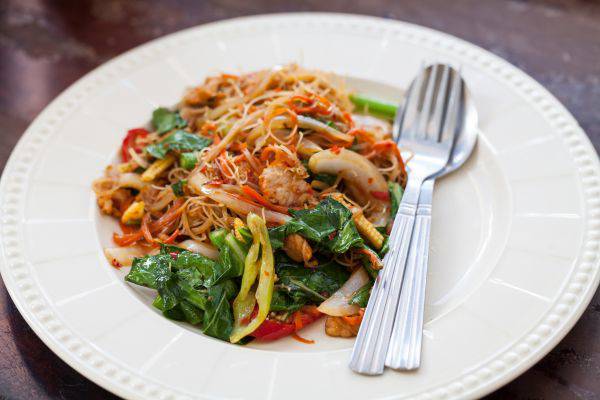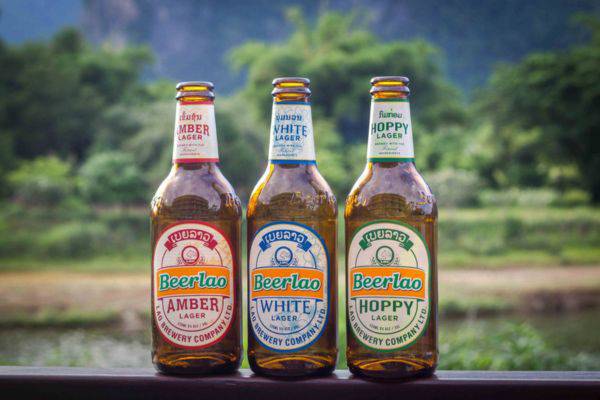Flavours of Vietnam: A culinary journey through a rich food heritage
When people think of Vietnam, they often imagine bustling streets, lush rice fields, or vibrant lantern-lit towns. But ask anyone who has been there, and they’ll tell you: the food steals the show.
Vietnamese cuisine is a symphony of flavours - fresh, fragrant, and perfectly balanced. It’s not just about eating; it’s about experiencing a culture that lives and breathes through its food. Whether you're exploring the beaches of Phu Quoc, the historical relics in Hue, or the alleys of Hanoi’s Old Quarter, you’ll find something to tantalize your taste buds at every turn.
1. Why Vietnamese cuisine is unforgettable
Vietnamese food stands out for its incredible balance: salty, sweet, sour, spicy, and bitter - all working together in harmony. It’s also famously light and healthy, using fresh herbs, vegetables, and rice-based staples.
Meals are built around contrast and balance. Central to this cuisine are a few essentials:
- Fresh herbs like coriander, Thai basil, mint, and perilla
- Nước mắm (fish sauce), the soul of Vietnamese seasoning
- Rice in many forms: noodles, pancakes, porridge, and paper rolls
- Light broths and marinades packed with umami
- Eating in Vietnam is an experience rooted in family, community, and tradition. Meals are often shared, with everyone picking from common dishes, wrapped in herbs, and dipped in bold sauces.
2. A taste of the regions: north to south
Northern Vietnam: Elegant and Subtle
In cities like Hanoi and Ninh Binh, the food reflects the cooler climate and historical Chinese influences. Flavours here are lighter, less spicy, and often seasoned with fish sauce and green onions rather than fiery chili.
Must-try dishes in the North:
- Phở – The iconic noodle soup, born in Hanoi. Warm, aromatic, and deeply comforting.
- Bún Chả – Grilled pork served with vermicelli noodles, herbs, and dipping sauce.
- Nem Rán (Spring Rolls) – Crispy and golden, served with fresh herbs and nuoc cham.
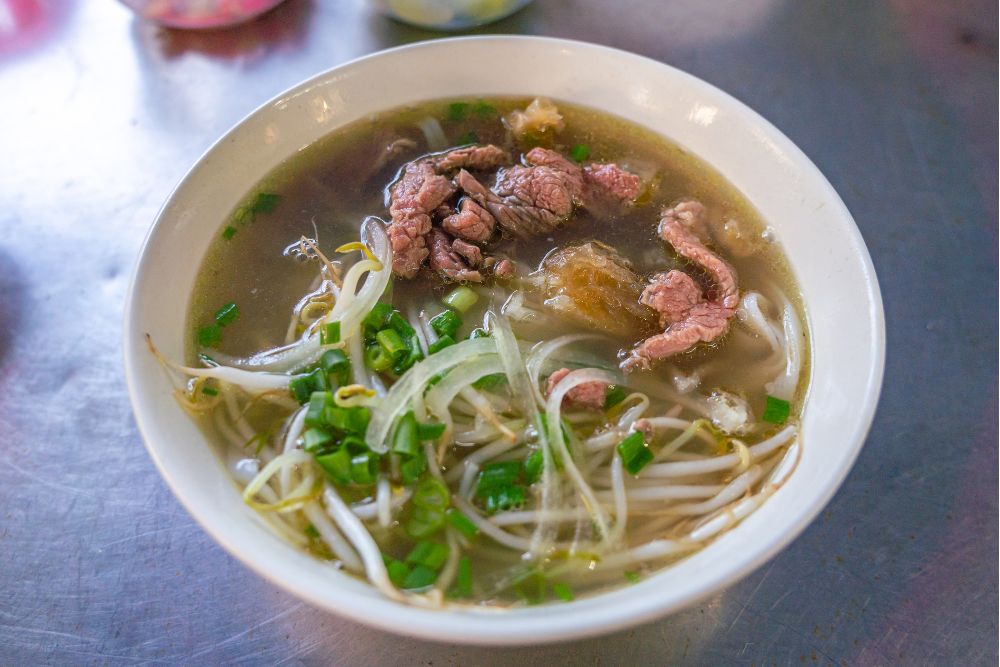
Central Vietnam: Bold and Fiery
Known for its imperial legacy and love for spices, Central Vietnam, especially Hue and Da Nang, offers a more intense flavour profile. The portions are smaller, but the presentation and complexity are unmatched.
Don’t miss:
- Bún Bò Huế – A spicy beef noodle soup with lemongrass and fermented shrimp paste.
- Mì Quảng – Turmeric-infused noodles topped with pork, shrimp, and roasted peanuts.
- Hue Royal Dishes – Bite-sized savory treats like bánh bèo and bánh nặm, originally created for emperors.
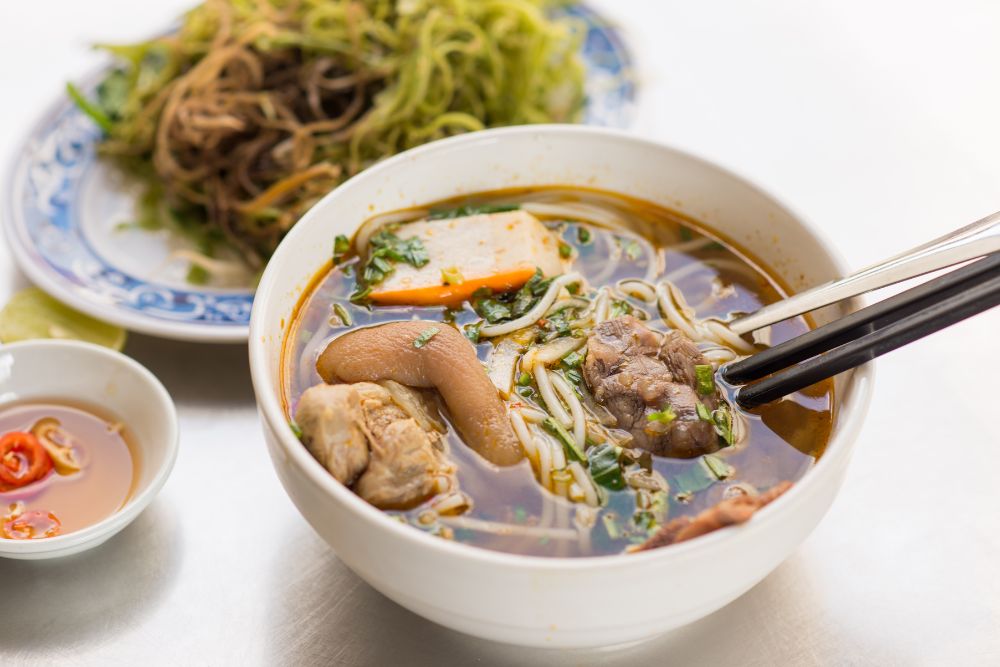
Southern Vietnam: Sweet, Rich, and Abundant
In Ho Chi Minh City and the Mekong Delta, the cuisine is influenced by tropical produce, Cambodian and Thai flavors, and an abundance of coconut. Southerners tend to prefer sweeter profiles and heartier servings.
Southern specialities include:
- Cơm Tấm – Broken rice served with grilled pork, egg, and pickled vegetables.
- Hủ Tiếu – A lighter, sweeter noodle soup with Chinese and Khmer influences.
- Bánh Xèo – Crispy rice flour pancakes filled with shrimp, pork, and bean sprouts.
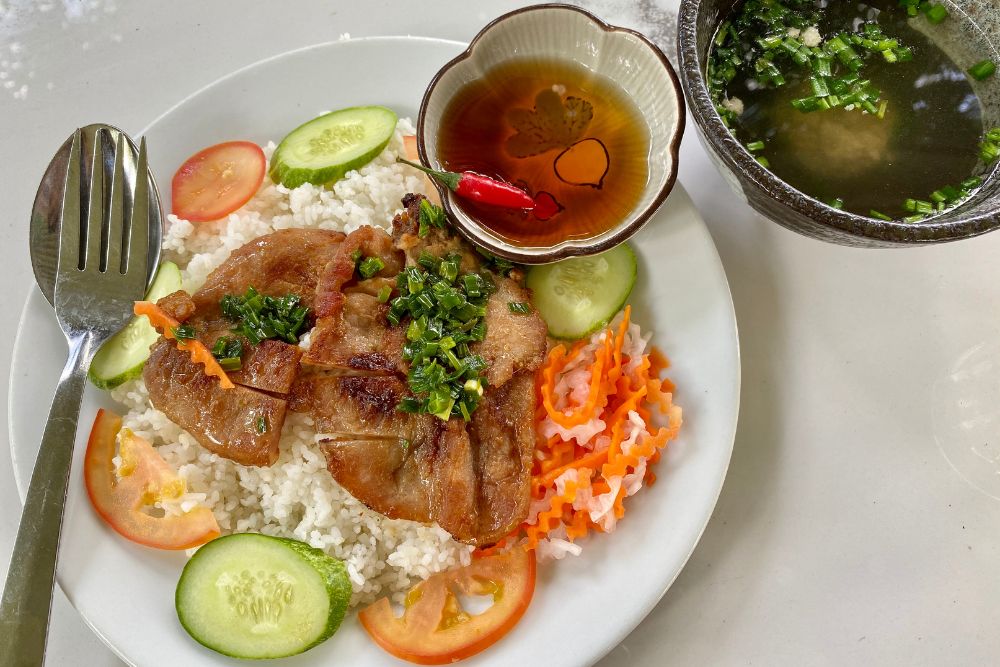
3. Vietnam’s culinary icons: what to eat no matter where you go
Some dishes transcend regional boundaries and can be found across the country - with local twists, of course.
- Bánh Mì – The world-famous Vietnamese sandwich. Crusty French baguette, pâté, pickled veggies, fresh herbs, and a variety of fillings.
- Gỏi Cuốn (Fresh Spring Rolls) – Light and refreshing rice paper rolls with shrimp, pork, vermicelli, and herbs.
- Chè – A colourful, layered dessert of beans, jelly, fruit, and coconut milk, perfect on a hot day.
- Cà Phê Sữa Đá – Strong Vietnamese iced coffee with sweet condensed milk, a must-have pick-me-up.
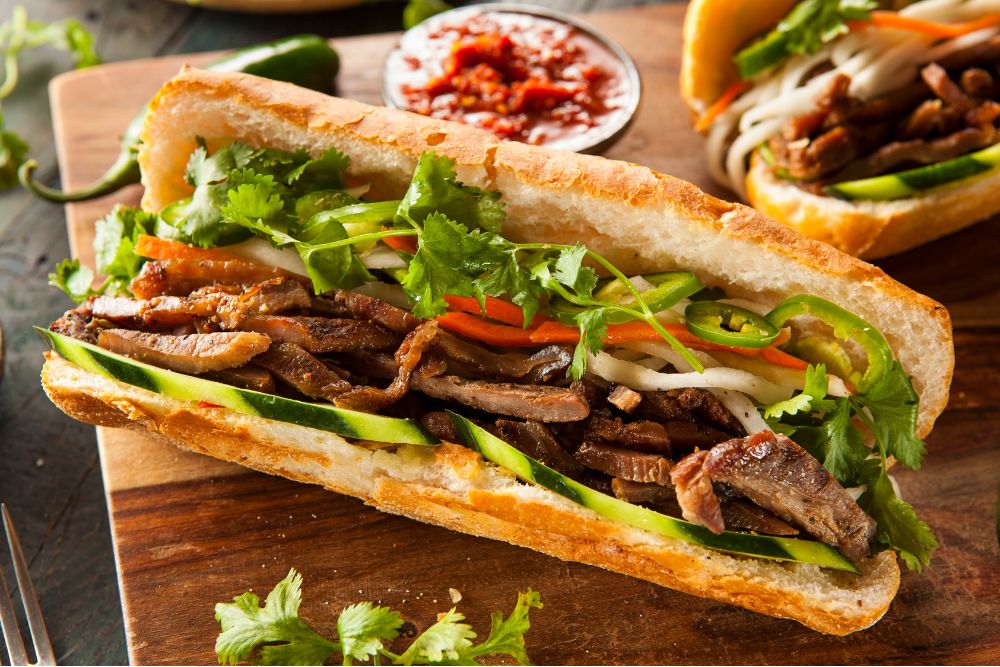
4. Street food: where the magic happens
Forget fancy restaurants - Vietnamese cuisine is at its best on the streets. Plastic stools, sizzling woks, and the aroma of grilled meats are all part of the experience.
Top street food cities to explore:
- Hanoi – Try phở at a sidewalk stall before dawn, or snack on bánh cuốn (steamed rice rolls).
- Hue – Wander through Dong Ba Market for royal street snacks.
- Hoi An – Sample white rose dumplings and crispy wontons from riverside vendors.
- Ho Chi Minh City – Night markets in District 1 or local gems in District 4 are street food heavens.

5. Food experiences for curious travellers
Looking to dive deeper into Vietnam’s food culture? Here are some immersive activities:
- Cooking Classes: Learn to make pho or spring rolls with local chefs. Many classes include a trip to the market.
- Food Tours: Hop on a motorbike and eat your way through the backstreets of Saigon or Hanoi with a local guide.
- Market Visits: Explore traditional wet markets to discover exotic fruits, fresh seafood, and street snacks.
- Home Dining: Share a meal with a local family - a chance to taste truly authentic home cooking.
- These experiences offer more than just food - they provide insight into daily life, customs, and hospitality.
.jpg)
6. Tips for foodies in Vietnam
- Start mild: Vietnamese chili can be intense. Taste first, then add.
- Eat like a local: Don’t be afraid to squat on a plastic stool and eat with your hands - it’s part of the charm.
- Try new textures: Don’t shy away from unfamiliar ingredients like jackfruit, lotus seeds, or fermented fish.
- Stay safe: Choose busy stalls with high turnover to ensure freshness, and stick to bottled water.
- Respect mealtime etiquette: It’s polite to wait for the eldest to start and to always say “Cảm ơn” (thank you).

7. Closing thoughts: let Vietnam feed your soul
From a steaming bowl of phở at sunrise to a sizzling bánh xèo shared with new friends, Vietnam invites you to slow down, sit close, and savour every bite. It’s not just a culinary adventure - it’s a connection to culture, history, and people.
Whether you're island-hopping in the south, walking ancient alleyways in the centre, or hiking through the northern hills, there’s always something delicious waiting at the next stop. So come hungry. Come curious. And let the flavours of Vietnam lead the way.
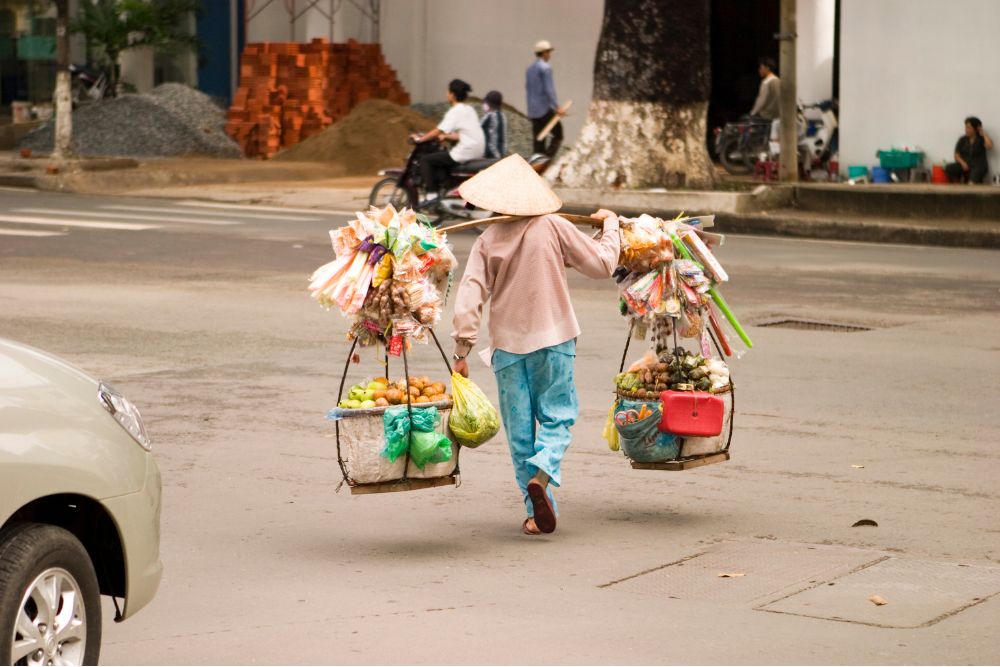




 English
English
 French
French
 Italian
Italian



